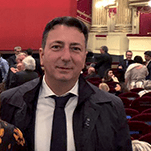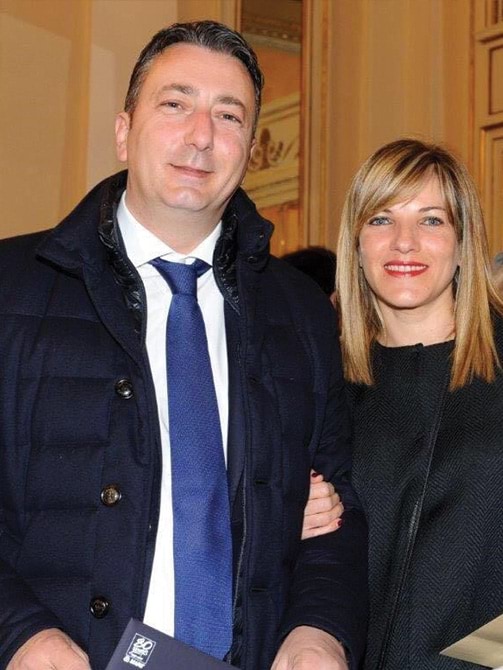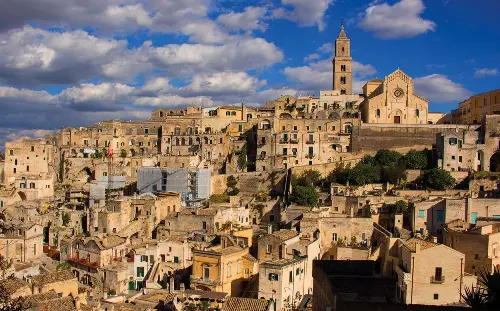Research and cutting-edge materials for restoration work in Matera
An interview with Gianluca D’alessandro, owner of D’alessandro Restauri
An interview with Gianluca D’alessandro, owner of D’alessandro Restauri
The D’Alessandro Restauri company has been working in the restoration sector for a number of years and took part in several projects in Matera to consolidate and restore numerous buildings and places of worship. It was also involved in work carried out on the historical paving of the city (see Realtà Mapei International no. 67).
Is it essential to have in-depth knowledge of construction methods adopted in the past to implement the right restoration techniques?
Knowing about the construction systems and materials of a building you are working on is indispensable in order to have the right approach to a restoration project. In fact, all the operational decisions that are made to carry out the work and choose which materials to use derive from this initial analysis, and they all have to be compatible with the original materials that make up the structure. What is more, each monument, even if it is situated in the same geographical location, has its own particular and distinctive characteristics. After studying a restoration project and carefully observing the monument to be restored, by exploiting all the knowledge about construction methods and specific local characteristics, you reach a level of knowledge that allows you to pick out the best products to use, after carrying out laboratory test campaigns.
What kind of problems were you faced with in Matera when you had to intervene on buildings which were not only of considerable historical and artistic value, but also situated in such a unique location?
Firstly, the actual setting up of the site. In highly complex contexts from a morphological point of view, as is the case with Matera, it can prove to be complicated, for example, to select a suitable area for the site equipment and logistics, and then there is also the problem of transporting materials. One of the biggest problems is the presence of voids and hollows below ground level, which sometimes nobody even knows about. Besides, the particular architectural details and features of each building, the presence of highly porous materials, and the problems caused by its hygrometric conditions make restoration work a rather delicate process which require in-depth knowledge of the building you are working on.
You are also collaborating with the University of Basilicata to test various products – including those from Mapei – on three churches in Matera. How important is research work into restoration methods?
Collaborating with universities is an essential component of a company’s activity, in that it forms the link between working practices and theoretical research, allowing you to raise the level of the quality of your operations. Our collaboration with the University of Basilicata involves experimental research work into new products for surface consolidation/protection and, above all, an analysis of the processes for their application. In fact, choosing Matera as a pilot site for this experimental research work is precisely the type of challenge that confirms the theory of the complexity of actions required to carry out restoration work.
When working on a restoration project, how much of a help is it to be able to count on cutting-edge products such as those supplied by Mapei?
The reliability of materials is fundamental, in terms of both their compatibility with the existing materials and the durability of the effectiveness of the intervention over the years. And this consideration becomes even more important in particularly complex situations such as the Sassi area of Matera where you also have to evaluate their state of conservation and their hygrometric conditions, which have a considerable impact on all renovation operations. The way the Mapei network is organised is very important, with the availability of specialised technicians in various sectors. The support provided by the Mapei Research laboratories is quite remarkable, in terms of both professionalism and the instruments they are equipped with, and they are available to work alongside our team to help them choose the most compatible and reliable cycles for each problem we are faced with. The reliability of a historical brand, one which is open to research and innovation, is a very important prerogative in order to conserve the historical and artistic heritage we are commissioned to work on.
What was the most complex and interesting project you have worked on?
The Cathedral of Santa Maria della Bruna, without a doubt, and not only for the complexity of a monument dating back almost 800 years, which certainly put to the test all those involved in the work due to the presence of different substrates and different coating and decorative layers, but also for the need to carry out restoration work by following a “logical thread”, that is, to make each and every historical feature recognisable without “encroaching” on any of the others. The intervention on Palazzo Zicari was also an interesting challenge, including of a structural nature, as well as the work we carried out on several churches in the Sassi area, because of their historical context. I have always said that a complex job that has been carried out well is a team effort by a group of designers, contractors, craftsmen, technicians, electricians, restorers, carpenters, builders and suppliers that have all worked with passion, dedication and professionalism. The work carried out by Local Heritage Authorities is also very important; they monitor all restoration work. Using Mapei materials is a winning choice because these products are renowned and their validity is acknowledged by all Local Heritage Authorities.
Il primo intervento di consolidamento delle travi e capriate lignee della Cattedrale di Matera è stato eseguito dall’impresa Pari Costruzioni s.r.l. di Potenza ed è consistito principalmente nel consolidamento corticale delle capriate lignee delle navate laterali e centrali della Cattedrale.
Catalogazione e numerazione delle travi lignee: Gli elementi strutturali lignei sono stati preventivamente catalogati, numerati e smontati uno ad uno dalla propria sede muraria; dapprima sono stati oggetto di un idoneo trattamento nella zona periferica attaccata da insetti xilofagi e carie da funghi e successivamente sono stati consolidati con il MAPEWOOD PRIMER 100.
Ripristino delle testate ammalorate delle travi: Si è effettuata la primerizzazione dei terminali mediante l’applicazione di due mani di MAPEWOOD PRIMER 100. Successivamente, si è posto in opera il MAPEWOOD PASTE 140 (adesivo epossidico di consistenza tissotropica), specifico per la stuccatura e la realizzazione delle protesi, opportunamente pigmentato così come richiesto dalla D.L.. L’operazione è stata conclusa, ricoprendo alcune zone con il MAPEWOOD PASTE 140 con dei listelli lignei di adeguata essenza e spessore. Sulla resina ancora fresca è stata spagliata della sabbia di quarzo asciutta QUARZO 0,5.
Il secondo intervento MAPEI di consolidamento delle travi e capriate lignee della Cattedrale di Matera
è stato eseguito dall’impresa Restauri D’Alessandro s.r.l. di Matera ed è consistito principalmente nei seguenti interventi strutturali:
•Le capriate lignee della navata centrale sono state consolidate inserendo in prossimità dell'intradosso delle catene, 2 lamine in carbonio CARBOPLATE E170/50, fissate con l'ausilio di resine epossidiche MAPEWOOD PRIMER 100, MAPEWOOD PASTE 140, MAPEWOOD GEL 120.
•Le mezze capriate delle navate laterali invece sono state consolidate ricostruendo gli elementi degradati degli appoggi lignei con resine epossidiche;
•La struttura di sostegno del controsoffitto ligneo decorato della navata centrale è stata consolidata mediante asportazione delle parti ammalorate delle travi e ricostruzione con resina epossidica, oltre all'esecuzione di una integrazione lignea degli elementi;
•Demolizione dei massetti in cls presenti sul tavolato soprastante le strutture lignee. Inoltre si è proceduto ad irrigidire la struttura mediante l'apposizione di un secondo strato di tavolato in legno castagno incrociato.












